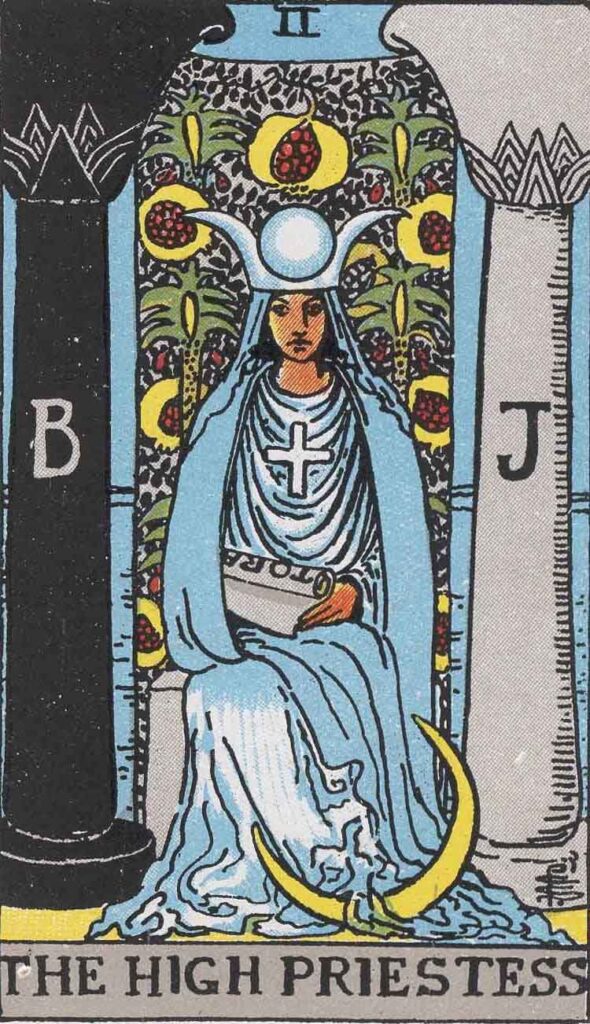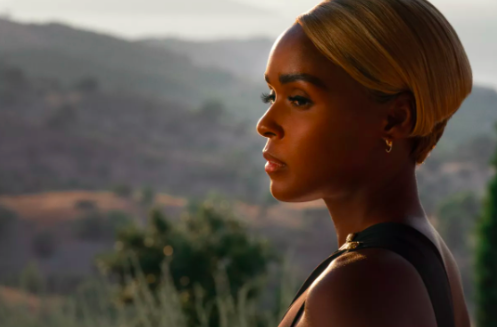Words by Blaise Peters
The issue of black authorship and ownership in the arts is a long-standing one that has affected countless black artists and writers throughout history. From the theatre industry to the world of tarot, black artists have had their work discredited, appropriated, and stolen.
Rian Johnson’s Glass Onion, released in 2022, serves as a fictional example of the ongoing problem of black authorship and ownership in the arts. Having seen the movie multiple times, on my own and with white people, I’ve found it really interesting the differences in viewing experience. For white progressives, watching this movie is cathartic. An explosive fire at the end that burns away the crime of Andi’s work being stolen. But when I watch it on my own, in the safety of my house, the one place where it is
truly safe to be Black – I see this movie differently. A warning and a reminder – this is what society does to black women. It devours, consumes, our genius, and brilliance. It puts a white man’s face as a figurehead, (or maybe a white woman if the institution is particularly progressive), cuts us out, and then rewrites history as a final headstone.
When Helen stands by her sister’s corpse, seeing what’s left of her work and genius – a dead body on a slab. That’s when it sinks in for me. History is littered with the unmarked and unrecognised graves of Black genius. It’s time we pay them justice.
As I continued to explore the issue of black authorship and ownership in the arts, I couldn’t help but feel overwhelmed by the sheer scope of the problem – navigating institutional racism in the Arts is like going head to head with an ugly beast, bloated from feeding off of black artistry. While I was not really sure what the purpose of this essay was, I knew I was angry. So I started off writing it, furious. I dove deep, and what I found was a deep murky well, and when I put my hand into it, I found that my cup runneth over with rage. And that rage kept spilling over, the further down the research rabbit hole I went.
I wanted to write a takedown of “The Man”, but I finished my research exhausted, discouraged, and most of all jaded. Anger is a gift, one I know how to use well, but I can’t sustain myself off of it. My anger must meet with something else, something warm, hopeful. I need to feel as much wonder as I do rage. I can sustain myself on wonder, just sheer wonder at the brilliance of Black women. Wonder at just how much this industry relies on us, our perspective, our intellect, our wit, our ingenuity. The Arts rely on Blackness full stop – on our culture, history, language, and at the same time, it devalues these things, mocks it, demonises it. In short, a disturbingly parasitic and exploitative relationship with black artistry.
As we delve deeper into the issue of black authorship and ownership in the arts, it’s crucial to recognize that this problem is not limited to contemporary theatre, but is deeply ingrained in the industry’s history. From Shakespeare’s collaborations with Emilia Bassano, to more recent examples. Take Alice Walker’s Pulitzer Prize-winning novel, The Color Purple, which was adapted into a Broadway musical in 2005. Despite the success of the production, it faced criticism for not giving proper credit or compensation to the book’s original writer. Similarly, August Wilson’s Pulitzer Prize-winning play, Fences, was adapted into a film in 2016. However, Wilson’s estate and the play’s original director were not credited or compensated for their contributions. Toni Morrison’s Pulitzer Prize-winning novel, Beloved, was adapted into a film in 1998. Like Walker and Wilson, Morrison was not credited or compensated for her contributions. Despite their critical acclaim and success, these works were not given proper credit or compensation to their black creators, highlighting the disturbing exploitation of black artistry by the industry.
The problem extends beyond the theatre industry as well. Take the example of Pamela Colman Smith, a British artist and illustrator, most known for her role in the creation of the Rider-Waite tarot deck. Her collaboration with Arthur Edward Waite resulted in one of the most popular tarot decks, but her contributions have been overlooked and her name has been overshadowed by Waite’s. Put simply, Colman’s tarot deck (it is hers – by virtue of every brushstroke and graphite line she put to paper) goes by Rider-Waite’s name.
I’m a big believer in updating history as and when we discover more context, so going forward I will be referring to the “Rider Waite” deck as the Colman-Waite deck. We can’t ascertain just how much input Waite had, but we can definitively conclude that Colman has every right to have her name on that deck – so we’ll do it posthumously, Since that seems to be the only time Black women receive our flowers – laid out on a cold headstone, while our white counterparts receive theirs in life and in death.

It wasn’t until after her death in 1951 that researchers and collectors began studying Colman Smith , analysing Smith’s artistic style, and consulting with experts and historians. Their findings may have also been part of a larger effort to recognize the contributions of overlooked or underappreciated artists, especially women, in the arts.
Another example of black women’s art being stolen and appropriated in the arts is the case of the Harlem Renaissance artist, Betye Saar. Saar’s artwork was discovered and collected by white artists and curators, who took credit for promoting her work. This is a common trend in the art world, where black artists’ contributions are often overlooked and downplayed by gatekeepers, who profit off of their talent and creativity. Saar’s work was often exhibited in galleries and museums, however, her contributions were not always acknowledged or credited properly. Instead her contributions were often overlooked and downplayed by these gatekeepers, who profited off of her talent and creativity.
Betye Saar’s experience during the Harlem Renaissance serves as a stark reminder of the ongoing problem of black authorship and ownership in the arts. Her work was not only overlooked and downplayed by white gatekeepers, but also stolen and exploited for profit. This is not an isolated incident, but rather a systemic issue that extends across industries and throughout history. Therefore, it is not enough to simply acknowledge and credit the contributions of black artists in the arts industry, but also actively work towards dismantling the systems and institutions that perpetuate this exploitation and suppression of black artistry.
This means actively seeking out and elevating the voices and works of black artists, and creating spaces where they can not only be seen and heard, but also valued and compensated for their contributions. It is time for a shift in the narrative, to celebrate and uplift the brilliance of Black women in the arts, rather than allowing their contributions to be overshadowed and erased. This is not only a matter of justice, but also a matter of recognizing the immense value and impact that black artistry has had and continues to have in shaping and enriching our cultural landscape.
Featured image credits: John Wilson/Netflix

